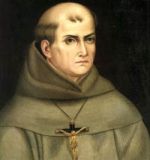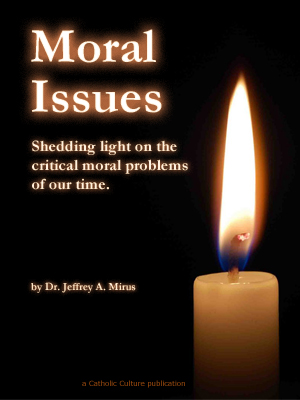Fathers of the Church
Decrees of Fabian
by Isidore Mercator in 847-852 A.D. | translated by Rev. S. D. F. Salmond
I. That the man who refuses to be reconciled to his brother should be reduced by the severest fastings.
IF any injured person refuses to be reconciled to his brother, when he who has injured him otters satisfaction, he should be reduced by the severest fastings, even until he accepts the satisfaction offered him with thankful mind.
II. The man is rendered infamous who knowingly presumes to forswear himself.
Whosoever has knowingly forsworn himself, should be put for forty days on bread and water, and do penance also for the seven following years; and he should never be without penance; and he should never be admitted to bear witness. After this, however, he may enjoy communion.
III. A man and a woman subject to madness cannot enter into marriage.
Neither can a mad man nor a mad woman enter into the marriage relation. But if it has been entered, then they shall not be separated.
IV. Marriage relations in the fifth generation may unite with each other; and in the fourth generation, if they are found, they should not be separated.
Concerning relations who enter affinity by the connection of husband and wife, these, on the decease of wife or husband, may form a union in the fifth generation; and in the fourth, if they are found, they should not be separated. In the third degree of relationship, however, it is not lawful for one to take the wife of another on his death. In an equable manner, a man may be united in marriage after his wife's death with those who are his own kinswomen, and with the kinswomen of his wife.
To the immediately preceding notice.
Those who marry a wife allied by blood, and are separated, shall not be at liberty, as long as both parties are alive, to unite other wives with them in marriage, unless they can plead the excuse of ignorance.
V. Blood connections alone, or, if offspring entirely fails, the old and trustworthy, should reckon the matter of propinquity in the synod.
No alien should accuse blood connections, or reckon the matter of consanguinity in the synod, but relations to whose knowledge it pertains,— that is, father and mother, sister and brother, paternal uncle, maternal uncle, paternal aunt, maternal aunt, and their children. If, however, offspring entirely fails, the bishop shall make inquiry canonically of the older and more trustworthy persons to whom the same relationship may be known; and if such relationship is found, the parties should be separated.
VI. Every one of the faithful should communicate three times a year.
Although they may not do it more frequently, yet at least three times in the year should the laity communicate, unless one happen to be hindered by any more serious offences,—to wit, at Easter, and Pentecost, and the Lord's Nativity.
VII. A presbyter should not be ordained younger than thirty years of age.
If one has not completed thirty years of age, he should in no way be ordained as presbyter, even although he may be extremely worthy; for even the Lord Himself was baptized only when He was thirty years of age, and at that period He began to teach. It is not right, therefore, that one who is to be ordained should be consecrated until he has reached this legitimate age.
I. That the oblation of the altar should be made each Lord's day.
WE decree that on each Lord's day the oblation of the altar should be made by men and women in bread and wine, in order that by means of these sacrifices they may be released from the burden of their sins.
II. That an illiterate presbyter may not venture to celebrate mass.
The sacrifice is not to be accepted from the hand of a priest who is not competent to discharge the prayers or actions (actiones) and other observances in the mass according to religious usage.
Taken from "The Early Church Fathers and Other Works" originally published by Wm. B. Eerdmans Pub. Co. in English in Edinburgh, Scotland, beginning in 1867. (ANF 8, Roberts and Donaldson). The digital version is by The Electronic Bible Society, P.O. Box 701356, Dallas, TX 75370, 214-407-WORD.






